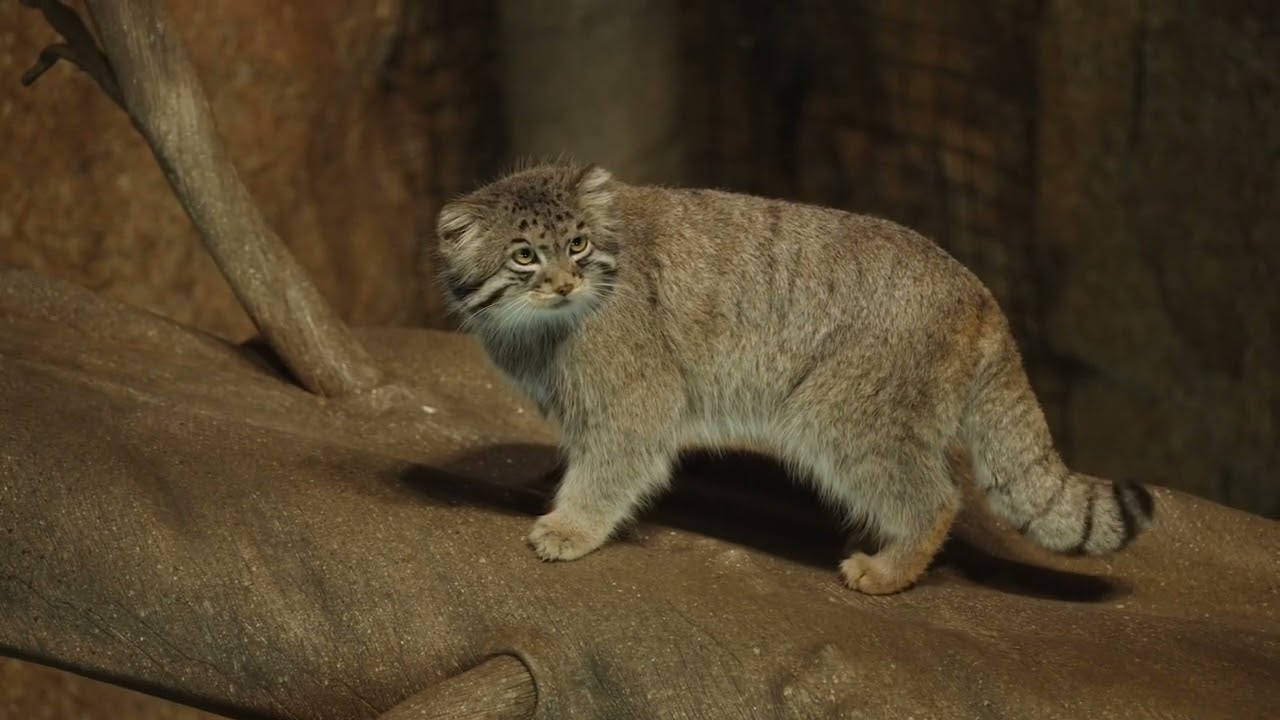- Description and Habitat of Pallas’s Cat: Understanding the distribution, physical characteristics, and adaptations of this elusive species.
- Behavioral Patterns and Survival Strategies: Examining the daily habits and unique survival mechanisms employed by Pallas’s Cat in the wild.
- The Role of Zoos in Conservation: Analyzing how zoological institutions contribute to the study, breeding, and preservation of Pallas’s Cat.
- Challenges in Conservation and Management: Identifying threats to Pallas’s Cat populations and discussing strategies for their effective management and protection.
- The Importance of Research and Community Education: Highlighting the need for continued scientific research and public engagement to support conservation efforts for Pallas’s Cat.
Johan Pallas’s Cat, also known scientifically as Otocolobus manul, commands fascination within zoologist communities due to its striking appearance and solitary lifestyle. Native to the rocky steppes and grasslands of Central Asia, this small wildcat is adept at surviving in high-altitude, harsh environments. The cat is well-suited to its native, arid habitats, where vegetation is sparse and weather conditions are often extreme. It thrives amidst rugged terrains spanning countries from Mongolia to western China, and into the wild hinterlands of Iran and Afghanistan, adapting ingeniously to cold climates often dipping below freezing.
Distinguishing the Pallas’s Cat are its unique physical traits. Weighing between 5 and 10 pounds, it bears a sturdy, stocky build. Its most noticeable features include rounded ears positioned low on the sides of the head and a shortened face, giving it a flattened, squashed facial appearance. The coat, thick and luxuriously soft, serves an essential function in cold environments by providing insulation. Fur coloration ranges from light gray to a muted tawny hue, occasionally adorned with darker spots or bands, enabling it to blend seamlessly into its rocky surroundings. Such camouflage not only enhances its stealthy hunting but also aids in evading predators.
Behaviorally, Pallas’s Cat demonstrates fascinating peculiarities. As largely nocturnal or crepuscular creatures, they are primarily active during dawn or dusk. Their solitary nature is marked by fierce territoriality, defending patches of land from intruders. Their limited range of communication consists of growls, yowls, and a peculiar form of sneezing, sometimes mistaken for aggression or signs of ill-health. Their hunting skills epitomize patience and precision, primarily preying on small rodents, birds, and insects. Unlike other wildcats, Pallas’s Cat rarely pursues high-speed chases; instead, it relies on ambush tactics, capitalizing on its cryptic coloration.
Zoos play a crucial role in the conservation of Pallas’s Cat, significantly contributing to scientific studies and management efforts. Housing Pallas’s Cat in zoos facilitates close observation of its habits, health issues, and breeding patterns, information that is vital for field researchers aiming to conserve these elusive cats in their natural habitats. Ex-situ breeding programs are particularly important, as they enhance gene diversity and reduce the risk of inbreeding. Many zoos collaborate globally to maintain genetic databases, coordinate breeding logs, and exchange individuals to keep captive populations robust and genetically viable.
Conservation of Pallas’s Cat presents myriad challenges, encompassing both natural and anthropogenic threats. Habitat degradation due to agricultural expansion and overgrazing poses significant risks to their environment, reducing prey availability and forcing cats into less suitable areas. Poaching, despite international protections, remains problematic in certain regions where their fur is coveted. Furthermore, the illegal pet trade occasionally targets Pallas’s Cat, despite challenges in taming them due to their wild nature. Another concern is the transmission of diseases from domestic and feral animals, contracting illnesses to which they have little immunity.
Stemming the tide against these threats requires multifaceted strategies. Conservationists advocate for the preservation of habitats through legal protection and sustainable land management. Anti-poaching initiatives must be rigorous, involving community engagement to shift perceptions and reduce demand for illegal wildlife products. In addition, establishing more protected areas and wildlife corridors could facilitate migration and gene flow, essential for maintaining healthy populations.
Research and public education are invaluable components in the conservation of Pallas’s Cat. Ongoing scientific research offers insights into their genetic diversity, behavioral ecology, and population dynamics. Detailed studies enable the development of informed conservation strategies that can be tailored to different geographic regions and threats. Public education, facilitated by zoos and conservation organizations, raises awareness about the plight of these cats. By fostering a sense of responsibility and urgency within communities, educational programs can galvanize public support for protective policies.
Pallas’s Cat, with its unique disposition and role in ecosystems, serves as a critical indicator species for the health of its native habitats. As zoos and conservationists continue their endeavors to preserve this extraordinary feline, the importance of collaborative efforts cannot be overstated. By combining scientific research, innovative conservation methods, and public engagement, there is hope for safeguarding Johan Pallas’s Cat for future generations, ensuring this remarkable cat continues its silent watch over the vast steppes and rugged highlands of its ancestral home.
*****
Source Description
Pallas’s cats are masters of disguise. Watch to the end to see Johan, one of the Pallas’s cats residing at Brookfield Zoo Chicago, camouflaging into the nooks and crannies in the rocks! This adaptation helps the species thrive in the wild.


